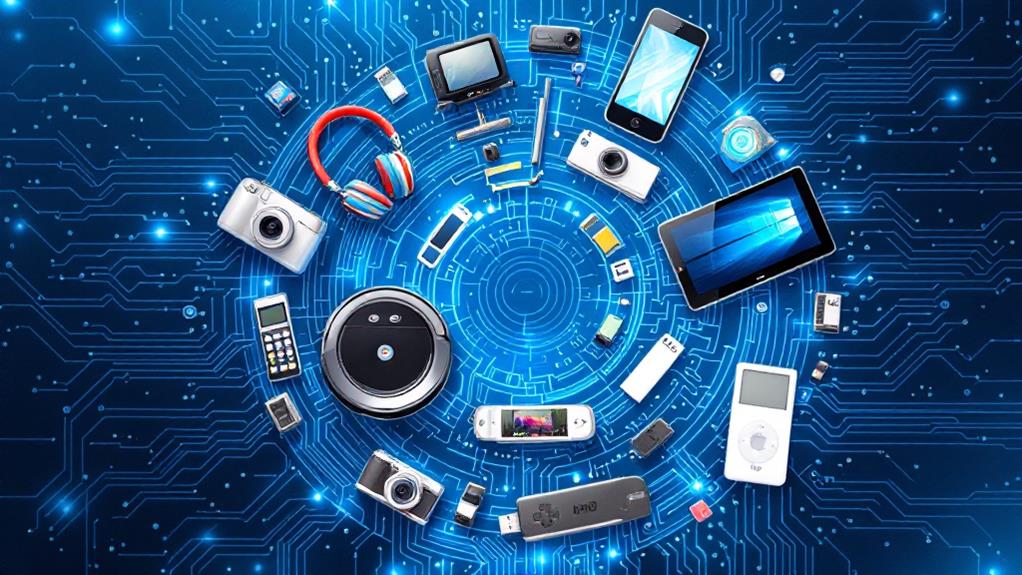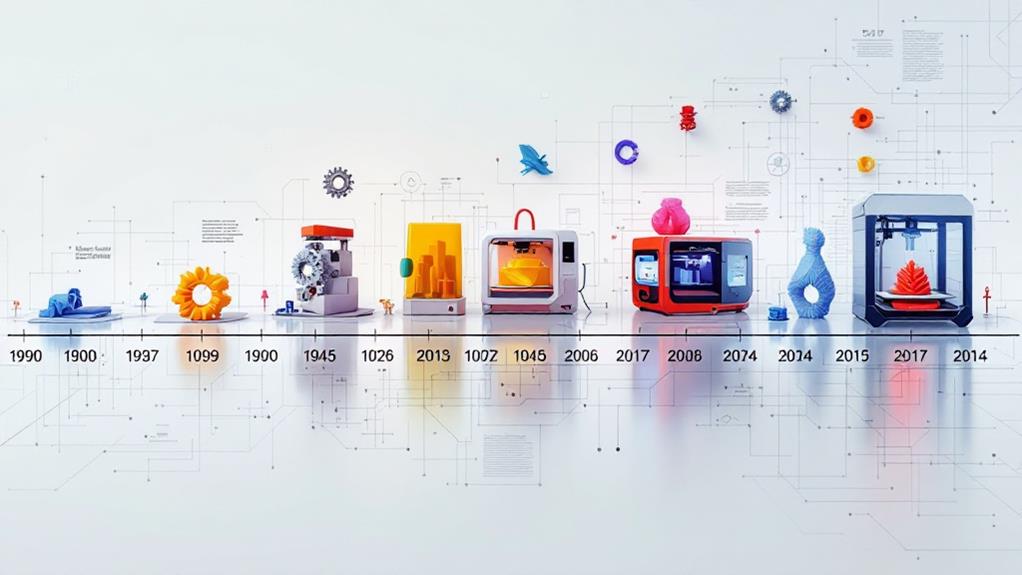Modern Technologies That Are Older Than You Think: The Surprising Origins
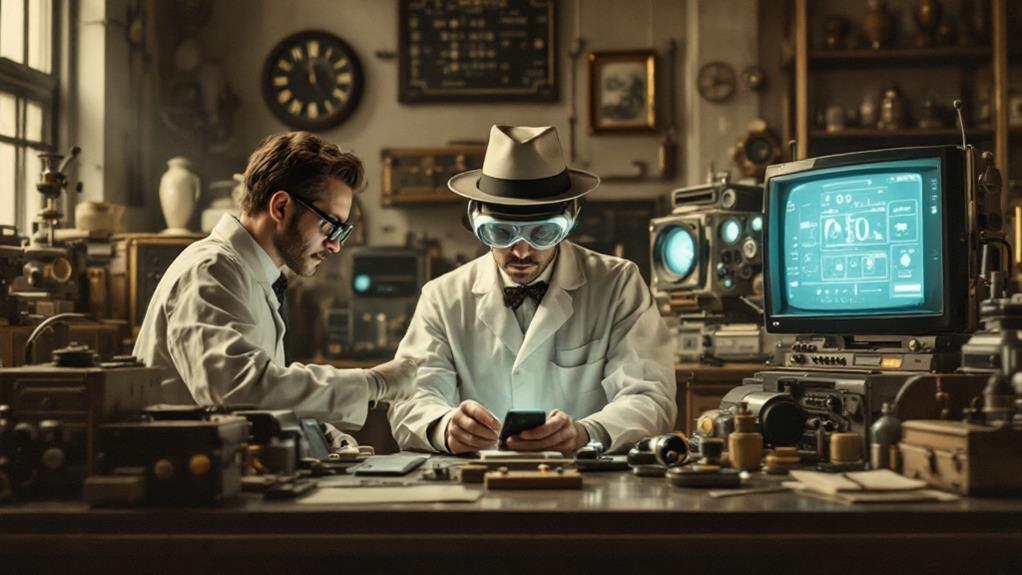
You might be astonished to learn that many "modern" technologies have roots dating back decades or even centuries. Touchscreens were developed in the 1960s, while electric cars were popular in the early 1900s. AI's foundations were laid in the 1940s and 1950s, with significant advancements in subsequent decades. Virtual reality concepts captivated humans long before the technological era, with early stereoscopic displays emerging in the 1830s. Even smartphone-like devices were envisioned as early as 1973. These technologies have evolved over time, building on their rich histories to become the innovations we understand today. Exploring their origins reveals a captivating expedition of human ingenuity and perseverance.
Touchscreens: A 1960s Innovation

Invention often surprises us with its timeline. You might assume touchscreens are a recent innovation, but they've been around since the 1960s. The first touchscreen was developed by E.A. Johnson at the Royal Radar Establishment in England in 1965. It used a capacitive touch sensor, similar to what you'll find in modern smartphones.
While early touchscreens were basic, they laid the groundwork for today's advanced interfaces. In the 1970s, light pen interfaces emerged, allowing users to interact directly with computer screens. These paved the way for more intuitive input methods. By the 1980s, multi-touch technology was born, though it wouldn't become mainstream for decades.
You've likely witnessed the rapid evolution of touchscreens in recent years. Multi-touch gestures, now commonplace on your devices, were once cutting-edge technology. From pinch-to-zoom to swipe navigation, these intuitive controls have revolutionized how you interact with digital interfaces. The touchscreen's expedition from a niche invention to an essential part of daily life showcases the long-term impact of seemingly simple innovations. As you tap and swipe, remember you're using technology with roots in the 1960s.
Electric Cars' Century-Old Roots
Contrary to popular belief, electric cars aren't a recent innovation. In fact, they've been around for over a century, with the first practical electric vehicle dating back to the 1880s. You might be surprised to learn that in the early 1900s, electric cars were more popular than gasoline-powered vehicles due to their quiet operation and ease of use.
The decline of electric cars in the 1920s was primarily due to the improved infrastructure for gasoline vehicles and the mass production of affordable internal combustion engines. However, the fundamental principles of electric motor efficiency remained superior to gasoline engines. It wasn't until recent decades that battery technology advancements made electric cars commercially viable again.
Today's electric vehicles build upon this long history, combining state-of-the-art battery technology with the inherent advantages of electric motors. The resurgence of electric cars isn't just a new trend; it's a return to an idea that's been progressing for over 100 years. As you drive or consider purchasing an electric car, remember that you're participating in a technological expedition that spans more than a century.
AI's Mid-20th Century Beginnings
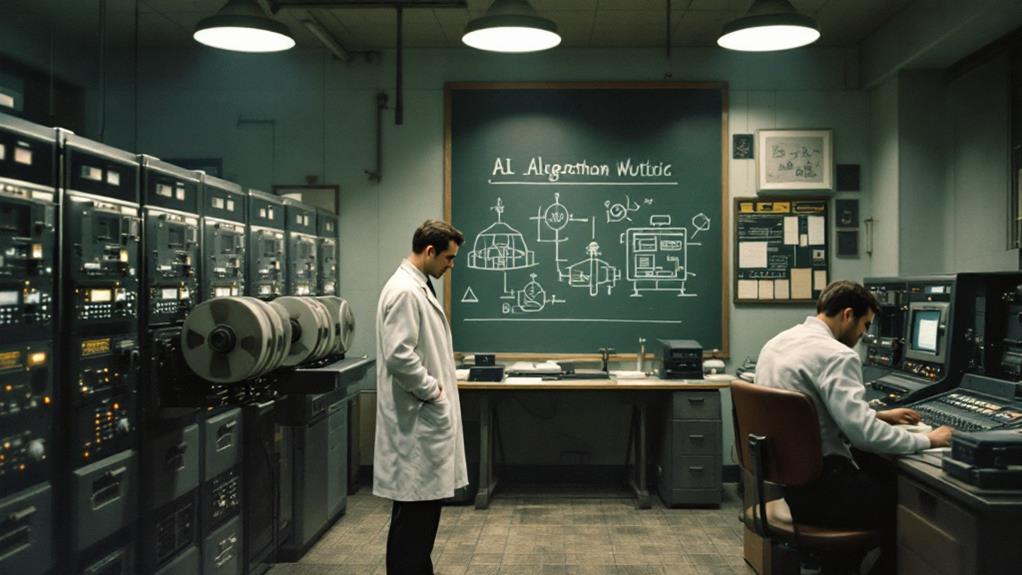
While AI seems like an innovative technology, its roots can be traced back to the mid-20th century. You might be surprised to learn that the foundations of AI were laid as early as the 1940s and 1950s. During this time, researchers began exploring the concept of artificial neural networks, inspired by the human brain's structure.
In 1943, Warren McCulloch and Walter Pitts proposed the first mathematical model of a neural network, charting the course for future developments. By the 1950s, pioneers like Alan Turing were already discussing the possibility of machines that could think and learn. The term "Artificial Intelligence" was coined in 1956 at the Dartmouth Conference, marking the official birth of AI as a field of study.
Throughout the 1960s and 1970s, researchers made considerable advances in AI, developing early expert systems and exploring statistical learning methods. These advancements laid the groundwork for modern machine learning algorithms. While AI has come a long way since its mid-20th century beginnings, many of today's state-of-the-art technologies still rely on principles established during this foundational period.
Virtual Reality's Pre-Digital Past
You might think virtual reality is a product of the technological era, but its roots stretch back much further than you'd expect. The concept of immersing oneself in an artificial environment has fascinated humans for centuries, long before digital technology existed.
In the 1830s, Charles Wheatstone invented the stereoscope, an early form of stereoscopic displays. This device used two slightly different images to create the illusion of depth, laying the groundwork for modern VR headsets. By the late 19th century, panoramic paintings and stereoscopic viewers were popular forms of entertainment, offering viewers a sense of presence in distant locations.
The 1950s saw the development of more advanced VR precursors. Morton Heilig's Sensorama, introduced in 1962, was a mechanical device that combined 3D video, audio, vibration, and even smells to create an immersive experience. Curiously, this system relied on analog computing techniques to synchronize its various sensory outputs. Ivan Sutherland's "Sword of Damocles" in 1968 marked another milestone, introducing head-mounted displays and position tracking. These innovations paved the way for the digital VR systems you're familiar with today.
Smartphone Concepts From 1973
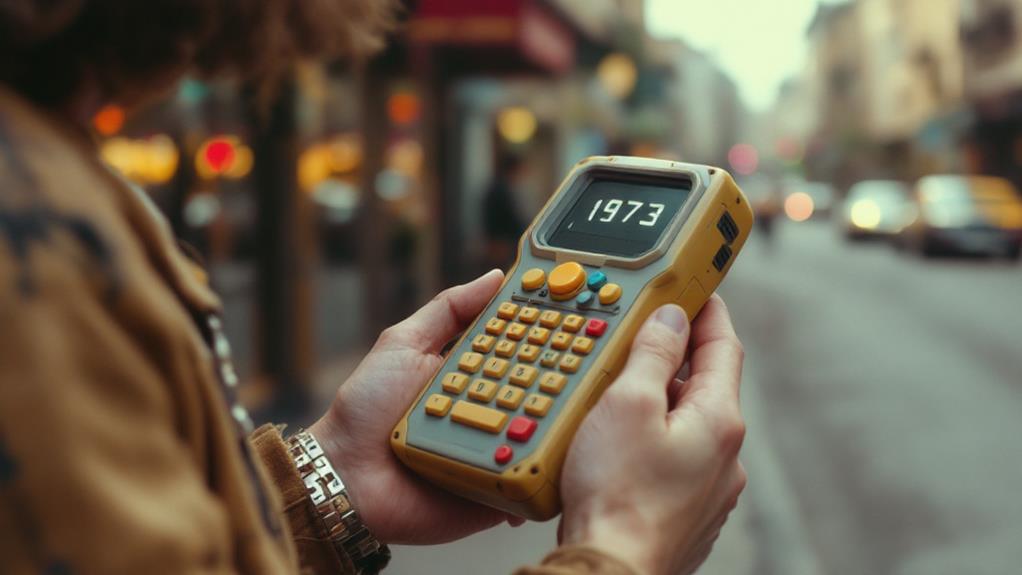
The modern smartphone didn't come out of nowhere. In fact, its conceptual roots can be traced back to 1973, when Motorola engineer Martin Cooper made the first call on a handheld cellular phone. While this device was far from the sleek gadgets we use today, it laid the groundwork for mobile computing and communication.
During this time, visionaries were already imagining devices that would combine multiple functions. They foresaw handheld computers that could:
- Make phone calls
- Access information wirelessly
- Perform complex calculations
- Display interactive maps
These concepts, though seemingly futuristic at the time, closely mirror the capabilities of today's smartphones. The idea of mobile computing was gaining traction, with researchers exploring ways to shrink computers and make them portable.
By the 1980s, early personal digital assistants (PDAs) were emerging, combining basic computing functions with organizational tools. These devices, along with the evolution of cellular phones, set the stage for the smartphone revolution.
It's astonishing to think that the seeds of our pocket-sized supercomputers were planted nearly half a century ago, long before the technology to realize them fully existed.

